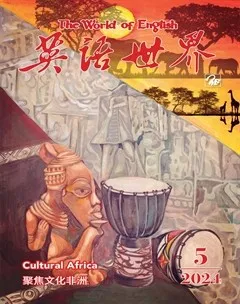《大国速度 百年京张》(节选)1From Steam to HSR—100 Years on the Beijing-Zhangjiakou Line (Excerpt)
王之光/译
110年前,京张铁路横空出世2,打破了外国人“中国人不能自建铁路”的妄言;110年后,京张高铁通车,在中华民族百年求索和民族复兴之路上续写下新的荣光3。
110 years ago, the Beijing-Zhangjiakou train steamed across the horizon, demonstrating to the world that the Chinese were perfectly capable of building their own railways. 110 years on, the Beijing-Zhangjiakou high-speed line is open to traffic—another milestone on the track of the Chinese nations centennial quest for national rejuvenation.
“1909年,京张铁路建成;2019年,京张高铁通车。从自主设计修建零的突破到世界最先进水平,从时速35公里到350公里,京张线见证了中国铁路的发展,也见证了中国综合国力的飞跃。回望百年历史,更觉京张高铁意义重大。”习近平总书记对京张高铁饱含深情。
In the words of President Xi Jinping: “In 1909, construction was completed on the Beijing-Zhangjiakou Railway. In 2019, Beijing-Zhangjiakou high-speed rail was opened to traffic. From the first breakthrough in self-design and construction to the most advanced level in the world, from a speed of 35 kilometers per hour to 350 kilometers, the Beijing-Zhangjiakou route bears witness to the development of Chinas railways as well as the leap in Chinas comprehensive national strength. Looking back at these hundred years, one gets a better sense of the significance of Beijing-Zhangjiakou high-speed rail.”
筑路的同时,中国人也在筑梦。
As they build their railways, the Chinese are also building their dream.
100多年前,那时的中国正经历五千年文明史上最为屈辱的一段:列强分食,山河破碎,王朝没落,民不聊生。从“老大帝国”堕落为“东亚病夫”,民族自豪、民族自信被坚船利炮打得七零八落……但即使这样,中国人民从未放弃追逐自己的梦想,以詹天佑为代表的工程技术人员和铁路工人们硬是不信这个邪,顶着压力迎难而上,在峭壁和深涧中勘测考察、凿山开路,搞出了“人”字形折返线等创举,工程竣工比计划提前了足足两年,实现了“我们要用中国人自己的技术力量修造中国铁路”的誓言4。
100 years ago, China was experiencing the most humiliating period in her five-thousand-year history: fragmentation by big powers, a country in decline, a disintegrating dynasty, and masses living in poverty. Collapsing from the worlds greatest empire to the “sick man” of East Asia, our national pride and confidence had been shattered under the onslaught of warships and cannons. ... Even so, the Chinese people never gave up their dream. Engineering and technical staff and rail workers like Zhan Tianyou5 chose to defy the forces of evil and rose to the challenge. Cutting through the mountains, they surveyed precipitous cliffs and deep ravines and came up with pioneering designs such as the V-shaped switchback ramp. Their project was completed a full two years ahead of schedule, fulfilling the oath that “We will use the technical expertise of the Chinese to build the railways of China”.
正是有詹天佑等萬千民众的不甘和奋起,亿万中国人最终在中国共产党领导下打碎旧世界,重整旧山河,为中华民族谋复兴,为中国人民谋幸福,重新挺起民族不屈的脊梁6。
It was through the efforts of people like Zhan that under the leadership of the CPC, hundreds of millions of Chinese people finally broke free of the shackles of the old world, and rebuilt the country.
百年后,势易时移。中国国内生产总值近百万亿元,稳居世界第二。高铁里程达到3.6万公里,超过世界高铁总里程的三分之二。
A hundred years on, times have changed. Chinas GDP is close to RMB100 trillion, ranking second in the world, and her high-speed railway network has surpassed 36,000 kilometers, more than two thirds of the world total.
作为北京冬奥会的重要配套工程,京张高铁是我国铁路发展的又一里程碑7。京张高铁建设者研发了世界最先进的泥水平衡盾构机,建成了世界规模最大、埋深最大的暗挖地下高铁车站,同步推进实体铁路和数字铁路建设以及智能化铁路运营……
Beijing-Zhangjiakou high-speed rail is an important project supporting the Beijing Winter Olympics. The construction team developed the most advanced slurry balance shield machine in the world. They tunneled the biggest and deepest underground high speed railway stations in the world, and integrated the physical railway with a digital railway and the operation of smart rail...
跨越百年,一代代人追梦不止,迈着创新的步伐砥砺前行。8
百年京张,见证了百年历史风云,但始终不变的,是中国人奋发图强、追求卓越的那么一种精气神,是为祖国争光、为民族争气的壮志豪情。
The old Beijing-Zhangjiakou Railway has witnessed a century of historical change, but what never changes is the ability of the Chinese to rise up, pursue excellence, and aspire to earn credit for their nation.
* 浙大宁波理工学院副教授。
1 本文节选自外文出版社于2021年出版的《大国速度 百年京张》一书之序言。该书以生动的文字,辅之以200余幅珍贵的插图,讲述了京张铁路百年变迁的故事,再现了中国铁路110年的历史飞跃。作为向世界展示中国高铁发展与成就的重要外宣作品,该书英文版不仅在国外发行,还与中文版一同陈列在北京2022年冬奥会重要配套工程——京张高铁上,主要面向国外广大普通读者。鉴于此,该书译者王之光老师和英文编辑大卫·弗格森先生都特别重视译文的可读性。 2 “横空出世”译为steamed across the horizon,既体现出当时的火车是蒸汽机车,又译出百年前以詹天佑为代表的中国铁路人克服重重困难建成京张铁路的卓尔不群。 3 相比直译的译文continuing to write a new glory of the Chinese nation along the road of its centennial quest and national rejuvenation,弗格森先生修改后的譯文可读性更高。其一,another milestone不仅忠实于原文的含义,而且简明扼要;其二,介词短语on the track of和介词for使句型更加紧凑,句内成分之间的逻辑关系更为明晰。
4 在中国,“詹天佑”也许是一个家喻户晓的名字,但对国外普通读者而言,并非如此。因此,弗格森先生建议在英文版中以脚注的形式(见注释5),简要介绍詹天佑其人其事。詹天佑设计的“‘人字形铁路”堪称铁路建筑史上的一项创举,彰显了中国铁路工程师的智慧。“人字形铁路”及其同义表达,如“‘人字形折返线”“‘人字线”“‘人字形线路”等,借用了中文特有的形符——“人”来指称形象相似的铁路,因此在英语读者的文化系统中没有对应表述。译者将“‘人字形折返线”译为the V-shaped switch back ramp,是借助巧思化解了这一文化差异。首先,中国的象形文字“人”与英文字母V形似,加上后缀-shaped,构成了英语读者熟悉的复合形容词;其次,switchback ramp也常见于译语文化中,如无障碍设计中的折返双坡道,这有助于读者理解列车如何先沿V形的一边爬坡进入车站,然后车头变车尾、车尾变车头,沿V形的另一边,掉头转向继续行驶。此句含122个汉字,译文为4个句子,是汉英翻译时依据两种语言在句法结构上的差异断句而译的典型例子。首先,“中国人民从未放弃追逐自己的梦想”是主题,可单为一句;然后,根据谓语和施动者的关系,即“不信这个邪”和“迎难而上”的施动者都是“以詹天佑为代表的工程技术人员和铁路工人们”,独译一句;再次,“勘测考察、凿山开路,搞出创举”是前句中“迎难而上”的佐证,亦可单独成句;最后,“迎难而上”的结果是工程提前完成,誓言终于兑现。译文4个句子各自独立,表述简洁明了,不仅符合英语句法特点,而且句子的开头、结构和长度都有变化。
5 Zhan Tianyou (1861–1919), or Jeme Tien-Yow, a pioneering Chinese railway engineer, was the chief engineer responsible for the construction of the Beijing-Zhangjiakou Railway, the first railway constructed by China. For his contribution to railroad engineering, Zhan is known as the father of Chinas railway. —Tr. 6、7、8 审订这3处译文时,弗格森先生都提出了一致的修改建议:省译。本书的翻译目的和读者群决定了英文版应采用通俗易懂的语言风格,以言简意赅为基本原则之一,避免冗余和重复,包括同义重复,尤其是当此类重复表达并未给作者正在阐述的观点增加额外价值时。

